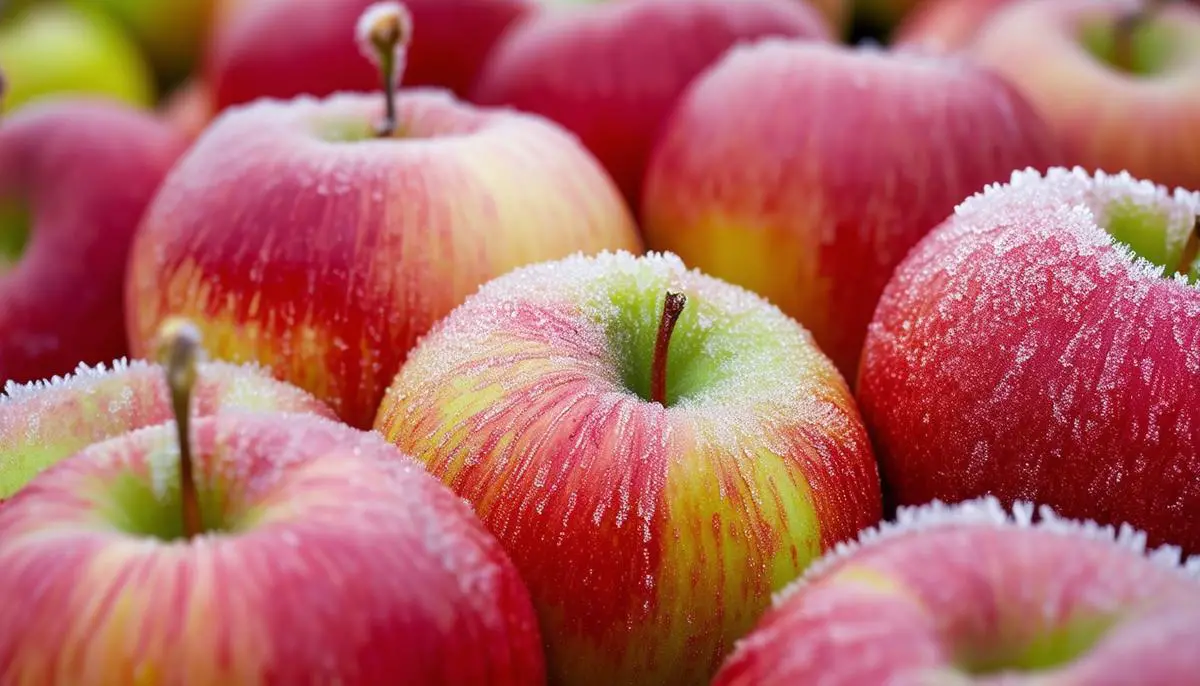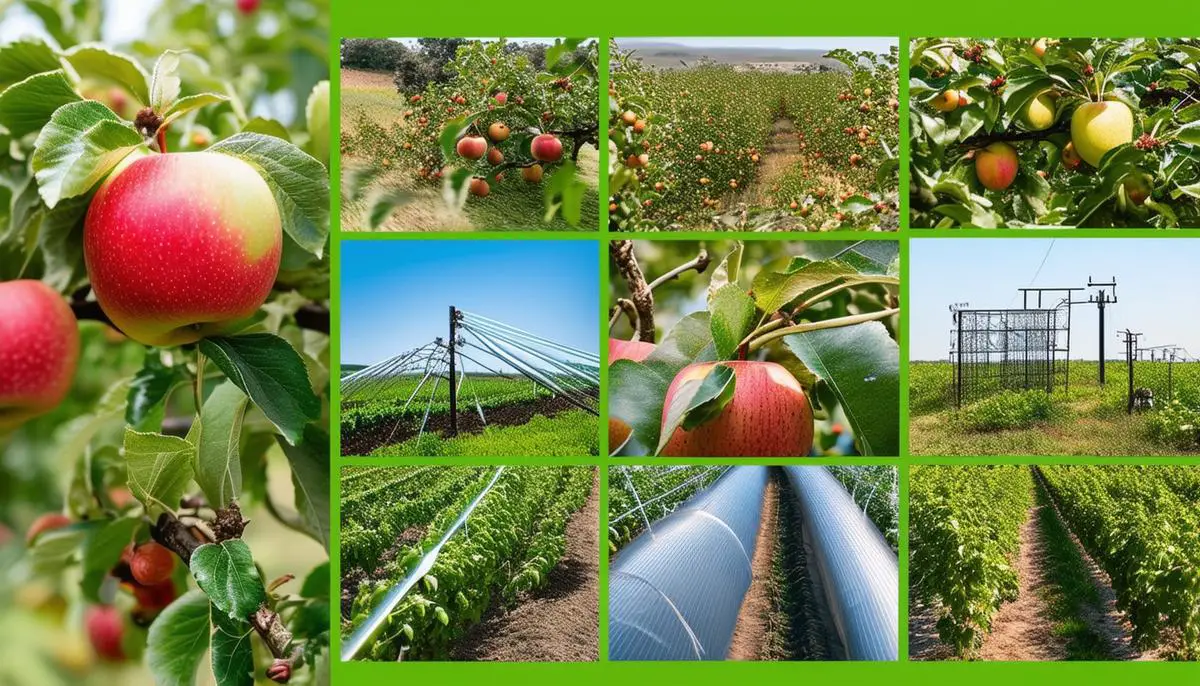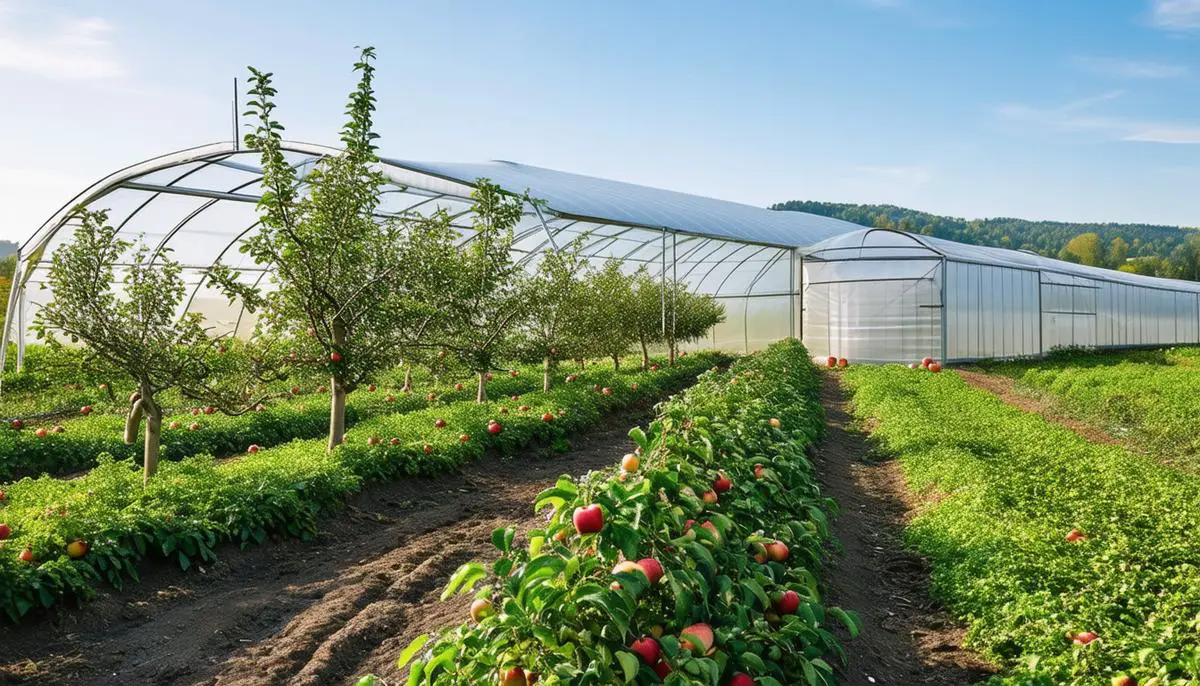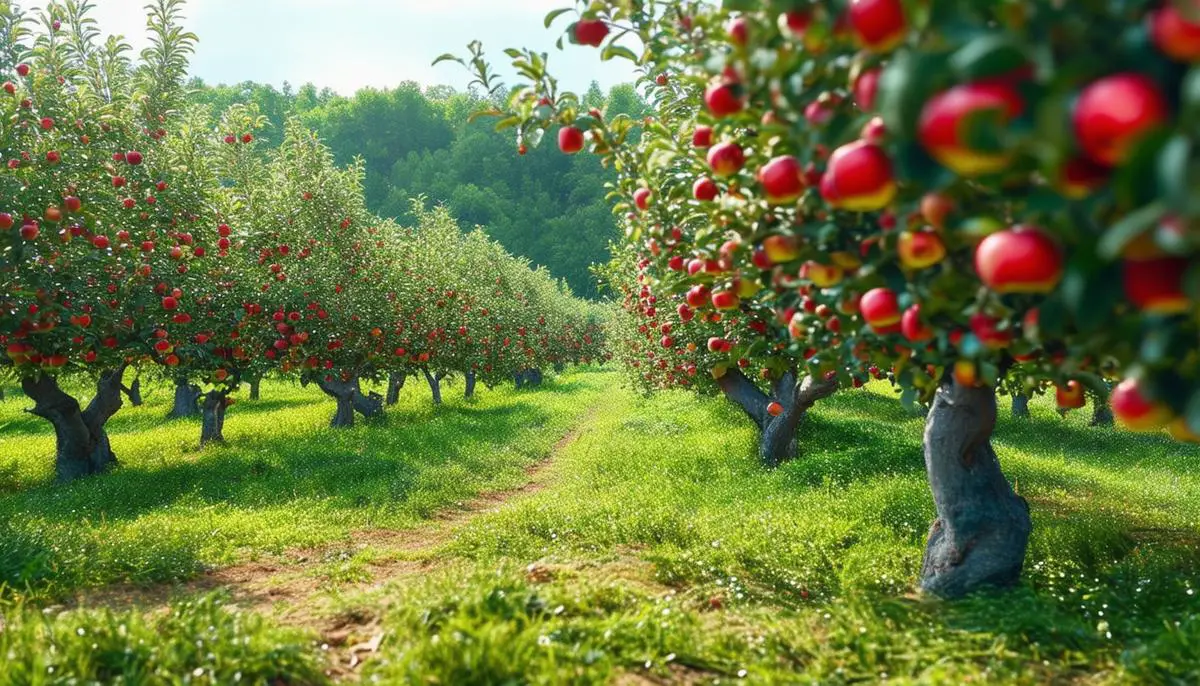Climate change is throwing apple farming into a whirlwind of challenges. With temperature swings and unpredictable weather patterns, the impact on apple yield and quality is undeniable. From spring frosts to scorching summers, the stakes for apple farmers have never been higher.
Effects of Climate on Apple Yield and Quality
Temperature shifts and unpredictable weather are making farm life tougher than ever. Spring frosts can devastate apple crops, reducing yield quality up to 2.05% per hour of exposure at -4°C. While quantity often remains unaffected, quality takes a nosedive.1
Frost damage isn't just about numbers – it's a visual disaster. Apples develop frost rings, making them less appealing and reducing their market value. Studies show a loss of 1.76% in price per hour exposure to -4°C. Premium apples hit by frost? Say goodbye to those fancy price tags.
Impact of Frost on Apple Quality:
- Reduced visual appeal
- Lower market value
- Decreased premium pricing
- Increased pest vulnerability
Climate change also brings hotter summers, leading to more challenges. All this variability makes farming akin to high-stakes gambling. With unpredictable weather, investment interest in proper insurance schemes is rising.
Farmers are burning cash to protect apple yields, but they're still racing against climate-induced quality slams. Those who adapt – shifting to no-till farming or high-tech cooling solutions – stay ahead of the curve.
Extreme weather impacts not just yield and quality, but sends ripples through the cost structure of apple production. Delivering perfect apples becomes a financial mountain to climb with global warming breathing down our necks.

Economic Impact on Apple Production Costs
When climate change starts throwing temperature tantrums, the costs mount quicker than you can say "Granny Smith." Frost-damaged apples kiss their high farmgate price tags goodbye. When quality takes a hit, so does the farmer's revenue – that's Economics 101.
Apple farmers aren't just biting the bullet on revenue drops. They're shelling out extra dough for climate adaptation technologies and strategies. Every dollar spent on frost prevention and water management is another dollar not in their pocket.
"Fancy frost prevention systems like evaporative cooling stations aren't free. They might shield your Fuji apples from turning into frosted flops, but they sure add a pretty penny to production costs."
Water management is another costly necessity. With hotter summers and erratic rainfall, it's all about playing the water game wisely. Think irrigation systems, water reservoirs, and even dry farming – all costing big bucks.
High tunnels allow for controlled climates, protecting sensitive crops from Mother Nature's mood swings. They can triple profits for certain vegetables, but not every apple is made for tunnel life. Plus, they cost a pretty penny to set up.2
Changing weather patterns make pests more comfortable, forcing farmers to up their pesticide game. Fancier bio-pesticides and compost from worm farms might cut costs in the long run but require initial investments.
Insurance schemes help soften the blow, but they come with their own premiums. As farm costs rise, insurers grow wary, and premiums skyrocket. It's a vicious cycle of spend to defend.
The impact on overall production costs is massive. From soil health initiatives to cover cropping, it's a constant juggle of quality versus quantity versus cost. Every harvest becomes a gamble against the caprices of climate change.

Adaptation Strategies for Apple Producers
Apple producers are arming themselves with adaptation strategies designed to give climate chaos a run for its money.
Key Adaptation Strategies:
- Cooling Systems
- Cover Crops
- Solar Energy
- High Tunnels
- Bio-pesticides and Composting
Cooling systems are like giant misters that keep your precious crop from turning into apple sauce before its time. These high-tech systems help shave off those nasty sunburns on apples. Farmers could cut crop losses by up to 50% with these bad boys installed.3
Cover crops act like a superhero cape for the soil, fighting off erosion and boosting organic matter levels. Barley and other cover crops play nice with cash crops, potentially improving yields and farm profits.
Solar panels on your farm? Heck yeah! Some farms are already cutting their energy costs and emissions by a solid percentage, using solar energy to fuel everything from water pumps to frost prevention systems.
High tunnels let you cultivate a controlled environment for your apple trees, reducing the risk of sun damage and keeping the temperature just right. This nifty setup can triple profits for certain veggies.
Bio-pesticides and composting with earthworms are game changers. Reducing the reliance on chemical pesticides decreases costs and helps nurture a more resilient apple crop, all while giving pests a nasty surprise.
These practices don't just mitigate the negative impacts of climate change; they can actually pump up your profitability and sustainability. Cooling systems and high tunnels mean higher quality apples worthy of premium prices. Cover crops and composting sharpen soil quality and reduce the need for expensive fertilizers, enhancing long-term profitability.

Future Outlook and Policy Implications
The outlook for apple production in the face of climate change might seem grim, but there's a bright side – it's all about resilience and smart policy moves.
Policy instruments are a farmer's best friend in this climate conundrum. Policies supporting research into climate-resilient apple varieties are worth their weight in Gold Rush apples. Sharing best practices across farming communities can help farmers adapt to the unpredictable.
Climate agreements like the Paris Agreement have a huge role to play in turning down the global thermostat. When countries commit to reducing emissions, it's not just about saving polar bears – it's about saving apple orchards too.
Industry initiatives are rolling out to help farmers transition to more sustainable practices. These often include grants to invest in technology, educational programs, and access to research which can shift orchards into a high-tech, climate-resilient future.
Potential Policy Interventions:
- Funding for drought-resistant apple varieties
- Incentives for water-saving irrigation technologies
- Promotion of agroforestry practices
- Improved climate risk insurance policies
- Carbon-neutral farming initiatives
Better climate risk insurance policies ensure that when Mother Nature throws a tantrum, farmers aren't left picking up the pieces alone. These policies bridge the gap between catastrophic loss and economic stability.
Governments and industry players need to push further on carbon-neutral farming initiatives. Public and private partnerships can forge stronger, more resilient agricultural communities by pooling resources and sharing rewards.
The integration of climate resilience into policy frameworks can't come fast enough. From crop insurance subsidies to regulations promoting sustainable farming techniques, every policy decision plays a role in crafting a resilient future for apple farming.
The future of apple production isn't set in stone – it's as dynamic and adaptable as the farmers who grow them. With the right blend of innovation, policy support, and industry collaboration, we can ensure that apple orchards remain a staple in our agricultural landscapes.

The future of apple production hinges on adapting to climate change with innovative strategies and supportive policies. By investing in climate-resilient practices, farmers can handle these turbulent times and continue delivering high-quality apples despite the odds.
- Snyder RL, de Melo-Abreu JP. Frost protection: fundamentals, practice and economics. Food and Agriculture Organization of the United Nations; 2005.
- Lamont WJ. Plastics: Modifying the microclimate for the production of vegetable crops. HortTechnology. 2005;15(3):477-481.
- Evans RG. The art of protecting grapevines from low temperature injury. In: Proceedings of the ASEV 50th Anniversary Annual Meeting. 2000:60-72.